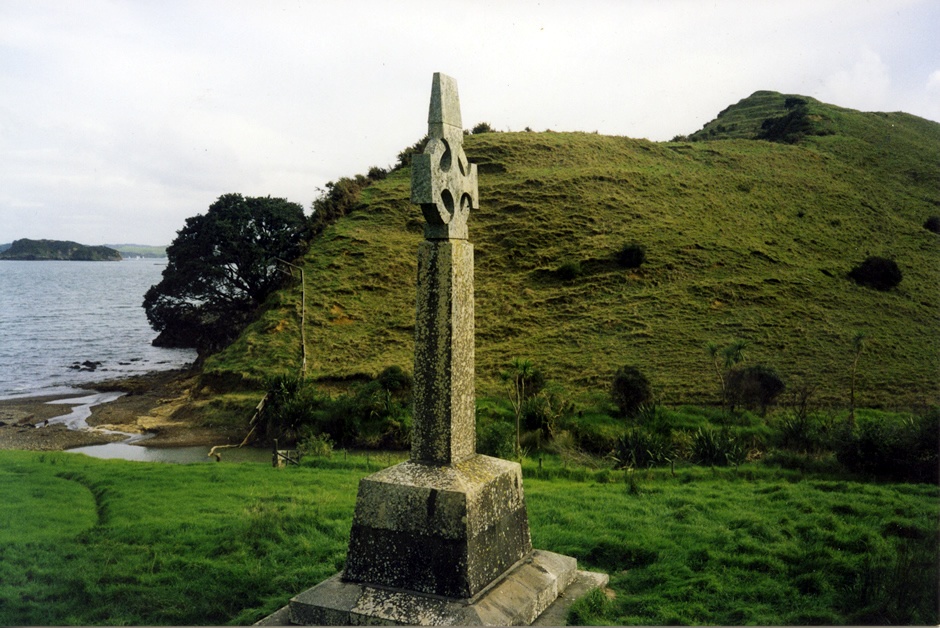
Rangihoua Pā and Oihi (Hohi) Mission Station (1815)
New Zealand’s first Christian mission
Picturesque on a sunny day, bleak at any other time, south-facing Hohi (long known as Oihi) provides an object lesson in the importance of geography and topography. Getting there is a breeze by water, but by land, even with modern roads, it is wearying - boats have always worked better than cars in the Bay of Islands. Trek down the farm road, though, and you immediately understand. In 1815 several hundred Ngāi Tawake crowded the now deserted stronghold of Rangihoua, a coastal ridge that looked commandingly out over the Bay, then bustling with whaling ships and Māori traders. Rangihoua also looked down on Christianity’s beleaguered first beachhead in New Zealand.
Local chief Ruatara was an adventurous young cross-cultural traveller. He had visited New South Wales and, willing to chance his arm, invited ‘the flogging Parson’, Samuel Marsden, to establish a mission in New Zealand. Marsden came ashore from the ship Active in December 1814 to celebrate New Zealand’s first Christian service. It has been honoured by stamps and by penny-dreadful historiography ever since, but fewer have dwelled on the fact that Marsden’s missionary mechanics had to wait almost a decade to make a single convert. Māori wanted European trade goods, not their superstitions.
If you look hard enough beyond the hefty Celtic ‘Marsden Cross’ in the grass you will see the archaeological platforms of the cottages erected on Hohi’s lower slopes by the Church Missionary Society’s disputatious pioneers. Here Thomas Kendall, William Hall and John King bickered and schemed against each other and sold guns while their Maori overlords looked down on them, literally and metaphorically. ‘Touched by God but otherwise not all that strange’, conservator Fergus Clunie notes, ‘the missionaries wanted to forsake this barren, claustrophobic cove.’ You cannot blame them, especially if you visit on a wet, windy day. Marsden, as usual, thought he knew better and kept them cooped up here until 1832.
In 2012/13 the University of Otago and the Department of Conservation conducted the first archaeological survey of the Hohi site in the lead-up to the bicentennial celebrations.
Further information
This site is item number 9 on the History of New Zealand in 100 Places list.
On the ground
Rangihoua Heritage Park opened in late 2014.
Websites
- Heritage New Zealand Register
- Rangihoua Heritage Park
- Department of Conservation info
- Hohi - Marsden Cross Facebook group
- Flickr page of Oihi mission station archaeology
- Samuel Marsden biography - Te Ara
- Ruatara biography - Te Ara
- Thomas Kendall biography - Te Ara
- Church Missionary Society - NZ History
- Missionaries and muskets - Roadside Stories (video)
Book
- Judith Binney, The legacy of guilt, Bridget Williams Books, Wellington, 2005






Community contributions